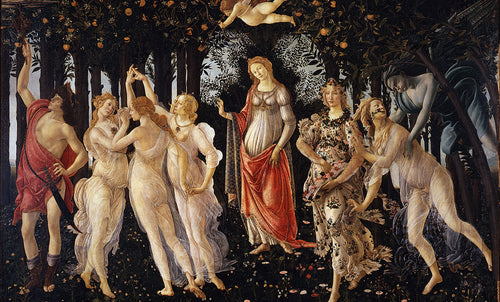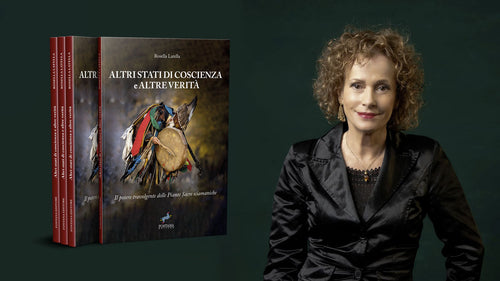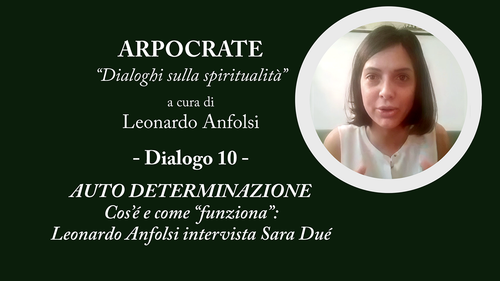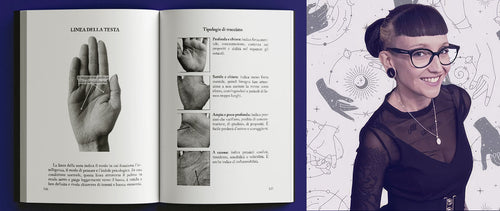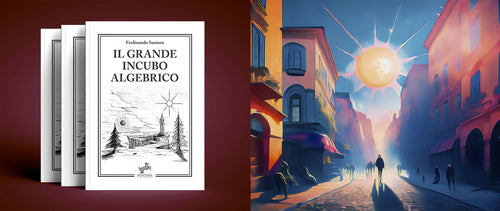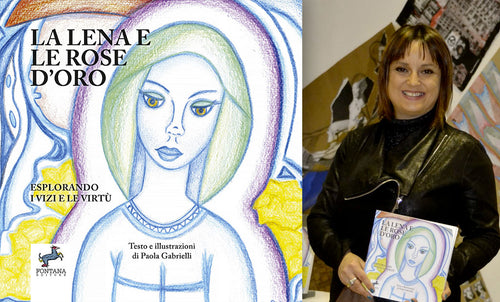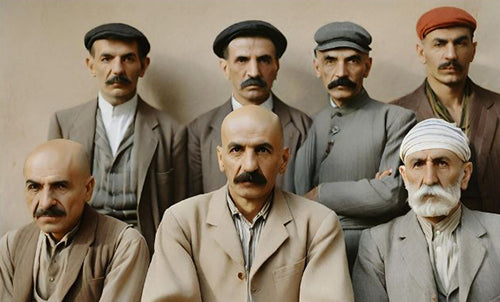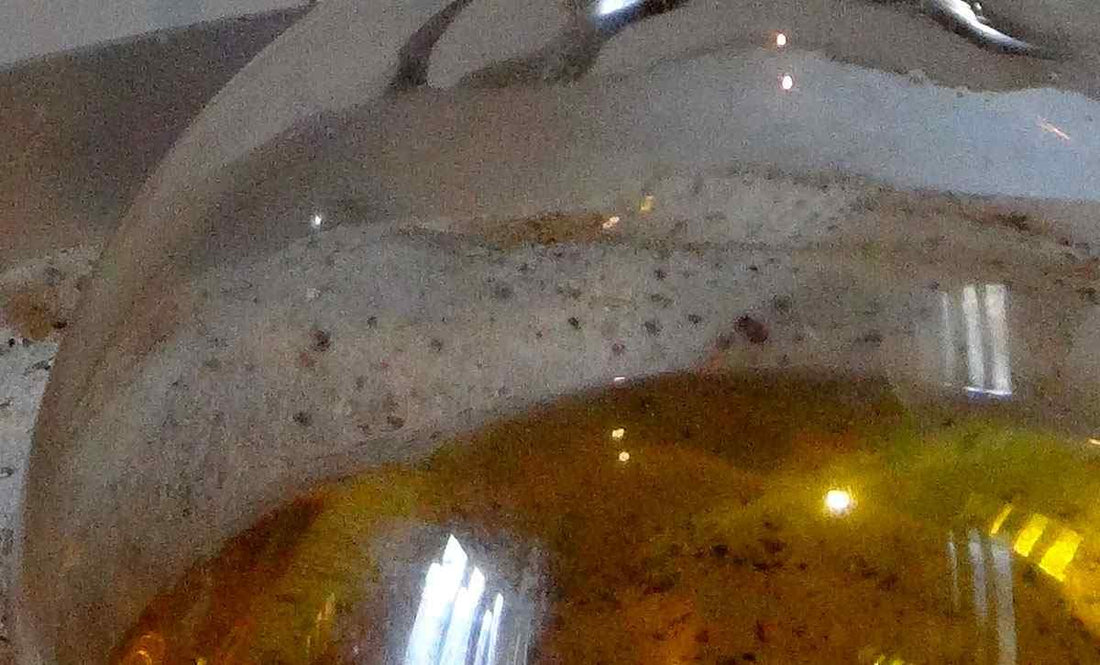
The veritable paracelsian Oil of Haarlem
Leonardo AnfolsiAnd some other formulas regarding sulfur as a polychrest. (Article from Nitrogeno 1)
The Medicamentum Gratia Probatum
The current formula of the Paracelsian Oil of Haarlem that I know, is composed as follows: turpentine 20 ana, linseed oil 1 ana, flowers of sulfur 4 ana. These substances, thoroughly mixed, are left to circulate on a steam bath in a flask, or in a circulator, if not in twins or pelican, until the liquid turns red amber. It is an arcana who has many uses , internal and external, and is still considered by many main stream physicians as a treatment for arthritis and gout. Apparently this formula was handed down by Paracelsus, rediscovered in Leiden and supported by Giuliano Kremmerz[1] in the early twentieth century.
A comment which is quite funny, even if not particularly respectful, regarding this arcana, comes from a newspaper of 1893, published in France by the Goncourt Brothers: “This Haarlem Oil, ordered by a doctor of that time, is a drug that seems to have been invented by a medieval hermetist […] after taking a few drops it goes back to the stomach as a fume that has the peculiar smell of the asphalt commonly used to repair sidewalks[2].“

Paracelsus in his formulas usually suggested the use of the raw and sticky turpentine, the one used in the cobbler's glue, that is, the direct exudate of the plant; We do not really know when the essence for the Huile de Haarlem, that is the resin distilled, has been used.
We know that in linseed oil there is linoleic acid, which is very beneficial, albeit somewhat perishable even when slightly heated.
I believe that the alchemical Essential of Mercury is manifested through circulation, by heating, as it was at the beginning of this process, being that the sulfur has been already heated and collected as a sublimation of its volatile salt[3] - that is the flowers of sulfur. So the burning sulfur that easily distills, funny to say, represents the Essential of Mercury.
The alchemical Essential of Sulphur, is here the turpentine, while the alchemical Essential of Salt, is manifested by the flowers of sulfur.
Of course, there is no need to create a visible movement in the circulating liquid, just some drops on the walls of the flask, always remain below 65° C, allowing some degrees fluctuation, but always below this temperature.
From a Patient Information Leaflet of the Distinguished Company Albrenor Pharma: “Veritable Huile de Haarlem License Thomas. INDICATIONS: problems of the hepato-biliary functions, problems associated with urinary lithiasis, some arthritic manifestations, bronchial affections, intestinal parasites (pinworms, roundworms)
DOSAGE : Adults:1 capsule or 10 drops 2or 3 times per day, half an hour before or 3 hours after meals for 10 - 15 consecutive days. After stopping for 10 days, start again if needed. In some infective cases, the dosage can be increased to 4-6 capsules for 5-6 days, advising the patients to drink abundantly non alcoholic liquids.
Children, according to their age and following doctor’s advice. The capsules, with no taste or smell, can be swallowed with some liquid. The drops need to be poured in a small spoonful of sugar, and swallowed with some water. The regurgitations, moreover rarely persistent, that occur some time after the absorption of this medicine, are not a sign of intolerance and therefore not a reason to stop of treatment”.
I want to remind you that it is advisable, for internal use, to take the gastro-resistant capsules, sold by the same company, unless the oil is also used to treat the mouth and throat.
This Medicamentum Gratia Probatum has been removed from the current conventional pharmacopoeia and considered only for veterinary use and for the general welfare of the horses: a panacea then? Not ever! If this was the case, then all the myriad of narrow-spectrum drugs - that with their side effects push the clients/patients to buy more drugs - would remain unsold.

Hahnemann’s Homeopathy - Paracelsus Van Helmont and Tartarus
For Paracelsus, an important effect of any arcana is without doubt to clean up all the tissues and ducts: veins, arteries, bronchi, bronchioles and alveoli, gall bladder and bile duct, ureter and kidney, tendon concretions and similar.
Even at the level of the nervous tissue may occur accumulation of amyloid, which is albumin at high aluminium content creating a glue around the synapse or nerve connections, causing them to die. When we consider where the functions are intertwined we should mention atherosclerosis, where an insufficient circulation affects first a part and then the entire nervous system.
The alchemical remedies, according to Paracelso, must act as solvents and remove all these concretions[4], leading to a rejuvenation of tissues and body functions. In order to treat the diseases caused by tartar concretions, we can say without doubt that the tartar should be used; This might have started Hahnemann’s interest to treat with simile. Hahnemann certainly knew Alchemy: think of the various by-products and substances of this ancient pharmacopoeia included in homeopathy: it would be enough to mention the Tartarus Stibiatum!
We know that tartar, manipulated in different ways, can give us exceptional medicines, starting from a calcination and infusion in alcohol up to the dry distillation, and various, wonderful products can be obtained, ending up with the glassware fouled "for ignem" and irreparably damaged.
The Tartar, actually, harbours a mystery.
The term "per ignem", through the fire, can be attributed to Jean Baptiste van Helmont[5] who defined himself "Philosophus per ignem".
Van Helmont was one of the most famous Paracelsian doctor of his time and like his colleagues, was using the Galenic medicine too, while supporting the vision of Paracelsus; The fact that he did this openly made him unpopular in those days among his colleagues, whatever their opinions, and, above all, in the eyes of the Vatican who greatly despised Paracelsus.

…Making it volatile, yes, but sealed in its sublimation. Turpentine is in nature a substance with an exceptional power but, to be precise, we call turpentine the essential oil extracted from a variety of pine or larch gems distilled through steam.
Starkey and Le Pelletier knew better the use of it.
Moreover, in hindsight, flowers of sulfur are already a sublimated substance in a stable form, harmonious and crystalized, and already with therapeutic properties.
Even today flowers of sulfur are present in the galenic preparations of the pharmacy, often used only for children sore throat. The dose needed is only the 1/3 of a pinch on the tongue.
Starkey and Lefevre about the Acid Distillation of Sulfur Oil Per Campanam
Since we mentioned in the article about Beccafumi, the chapter in which Biringuccio explains the Sulphur preparation per campanam[6], let’s say something useful about it, being nothing but a kind of sulphur prepared by a dry, burning, distillation.
I do not recommend its use: it seems a preparation which is kind of coarse and a bit gross, but then we will see how Lefevre will solve the case.
Johann Rudolf Glauber states that for these kind of uses the crude vitriol or sulfur, as an ore, are more or less the same, and has a similar greenish color.
George Starkey, however, speaks enthusiastically about this preparation letting us know, that it prolongs the life by reinforcing the viscera - or rather embalming them, but that to access its benefits one must first win the revulsion and stomach pain lasting for a few days or weeks. I believe that the reader can understand my dismay.
Nevertheless it is true that a Chinese who ate a particular type of Chinese giant ant every day, managed to have the spontaneous painless regrowth of another row of teeth behind the first outer row. He said the same of his cure, handed down from his ancestors, who had warned of the connected stomach problems.
Compared to these extreme ordeals, the tarry regurgitations of the Huile de Haarlem seem irrelevant, and one wonders how sensitive, for better or for worse, we have became.
Going back on sulfur ad campanam, Starkey[7] tells the story of a butler, a John Moss, who by using that arcana, remains in perfect health - although centenary - as well as spry and athletic.
How the sulfur oil “per campanam” is distilled?
The “campana” can be made of clay- with the opening facing down, so that the distillate drips into a concave container placed below the crucible; between the two there is only half an inch of space allowing the air to enter, while the basin above should cover completely the flame and receive the distilling smoke without being touched by its flame, in which case an extremely acid distillate would be created; at the same time the basin should not be too far away, otherwise we would have a sublimation in flowers, and they would also be acid. The right preparation happens when the distillate falls from the “campana” in streams – for this reason the form is to be well studied - then dripping on the underlying basin that collects the liquid in its lower space, underneath the stoneware crucible. In the crucible, appropriately raised, the sulfur is burning.
In the case, of a “campana” with one or two noses from which the liquid drips on the outside, the liquid is collected out of the system by one or two receiver, while inside the “campana” its rim especially folded internally, collects the distilled substance bringing its stream to a pocket, and then to the nose or to the two noses.
De Sgobbis remarks that it's good to produce sulfur oil per campanam when the climate is damp, that it is important to close doors and windows while distilling and that it is worthwhile/convenient to previously moisten the inside of the “campana”. Obviously, I add, a hood placed over the “campana” it would be convenient.
Nicolas Lefevre * was convinced that by distilling the dry sulfur, with the help of some devices, you could get the same substance but much less nauseating**. Using something we already know, he added turpentine, already known to us, and he used a retort with a very large nose for colleting and coobating.
The Lefevre's Insight
Lefevre says that first and foremost, the sulphur needs to be “mortified” * that is, it should be brought to maturation ; since the alchemist follows nature’s way, in this case complementing nature’s work, it will act as it would do with a an unripe fruit, putting it in an appropriate place to fully ripen, and then applying a specific heat.
The sulphur is then matured in a flask at a moderate temperature, so that it will not melt or catch fire, as long as a philosophical month ** lasts. Thus we obtain a sulphur which has not an unpleasant smell: this can be checked by putting a bit of the treated sulphur in a little oil and in another bit of oil the untreated sulphur; the former will not stink.
Having observed this, we can put the sulphur already “mortified”, inside the natural turpentine, ana 1 sulphur / 8 turpentine, and place in the matraccio (flask) in balneum maris, never above 50 ° C, that is, at even lower degrees, the formula of the Huile de Haarlem that I have already given, until the oil becomes ruby red.
We then distill it all by putting through the vessel (receiver) the turpentine oil of and leaving in the flask a sticky substance similar to syrup.
We then cooba,it, which in this phase means to mix again, the distillate in the container and the syrup in the flask allowing them to sit for 3 days, always at balneum maris(bain marie) and then cooba it for7 times; the last time we distill thoroughly and we let the turpentine reach the usual syrupy consistency; We then slightly raise the temperature and change the container the result is a True Oil of Sulphur, very red, fragrant and very effective which, Lefevre says by his own experience, resolves internal ulcers, preserves the tissue, is effectively used against the diseases of the uterus, even against the plague, asthma and empyema(?)emphysema, against colic and,even against tartaric concretions. In its external use, Lefevre says it works for sciatica and hardened body tissues.
He finally cites Van Helmont: "I urge the novices to learn how to strip the Sulphur from the accidental and poisonous strength of its minerals: under their custody is hidden the fire that leads very gently to the Archeo and towards the desired results".
But Van Helmont was not speaking about sulfur, the "S" on the table of Mendelev - but the Sulphur as Essential, and he says Archeo with a capital A; he definitely referred to an "universalia" process; This makes us think that Lefevre was winking at us under the sleepy gaze of chemists and soffiatori (blowers?) of all the ages.
Let us now see what De Sgobbis says. I will quickly summarize it: he proposes two last works, the sulfur of the Closseo and the acid oil of sulfur according to Glauber,he considers the results of the latter similar to those of the sulfur for campanam; I introduce them only briefly, as a curiosity.
In the Closseo sulfur, the sulfur gets distilled with the help of the spirit of nitro (HNO3 nitric acid) or by adding to it sea salt spirit of (HCl), therefore obtaining the aqua regia (HNO3 + 3HCl), known to be useful for many purposes , however unstable. Later it will be removed.
The retort should be heated at the bottom and at the top to coobare 6-7 times.
The acid oil of sulfur , according to Glauber, is obtained with an apparatus more complex than the one used to distill per campanam; It is in some way, similar, but it is inserted into a furnace. A reducing atmosphere is created, since the crucible is at the top and produces smoke coming from some coals burning inside; a water cooling system is added, passing over the crucible’s helm shaped as a campana” and placed outside the furnace while the other sulfur keeps on being added. A nose comes out of the crucible.
I can only humbly draw the attention of the people interested, on the possibilities available to them, once they had understood the implications examined in this article; to anybody who would like to have a sulphurous remedy ready to use - (whereas the sulfur well formulated is considered today a valuable precursor of glutathione). It should be clearly now that I recommend theVeritable Huile de Haarlem. Those willing to try it should know that the method “per campanam” is extremely long and indeed produces very little remedy; therefore it should require some full days. I would recommend the already mentioned method that I’ve named the Lefevre's insight,through which is collected a good amount of remedy already in a day. Those who had truly understood what happens through the use of turpentine - and also what the flowers of sulfur are, should give it a thought and try to understand how to use this vegetable force for quintessences, such as that of Melissa officinalis.
As an ideal historical methodological continuation of our discussion we have added after this article, the text of George Starkey already mentioned.
1. Giuliano Kremmerz is the initiatory name of the Neapolitan Hermetist Ciro Formisano, student of Izar bne Escur.
2. “Cette Huile de Harlem, ordonnée par un médecin de ce temps, est un médicament qui semble avoir été inventé par un hermétique moyenâgeux […] après en avoir pris quelques gouttes, il vous remonte de l'estomac des fumées qui ont l’odeur de l'asphalte en fusion pour la réparation des trottoirs”.
3. Flowers of sulphur, is a natural traditional remedy anciently obtained with the dry distillation of sulfur, where the first “acid water” has been distilled by, then letting the crystal flowers form in the nose of the elm; in the modern pharmacology is obtained by the rapid cooling of sulfur vapors.
4. Il libro delle malattie tartariche, Paracelsus, edited by Nicola Piscopo Roma 2000; original title: Samtliche Werke, Jena 1926
5. J. B. Van Helmont, Brussels 1578-1644
6. The bell (campanam) has been made of stoneware or iron. Then glass.
7. See on this issue the next article: Per Campanam, from The Admirable Efficacy and Almost Incredible Virtue of True Oyl, which is made of Sulphur-Vive, set on fire, and called commonly Oyl of Sulfur per Campanam, George Starkey, 1660






